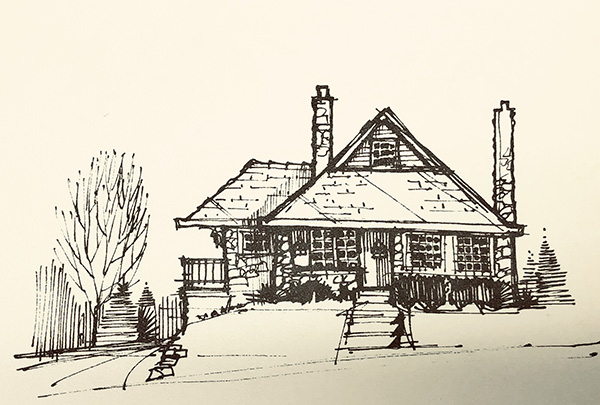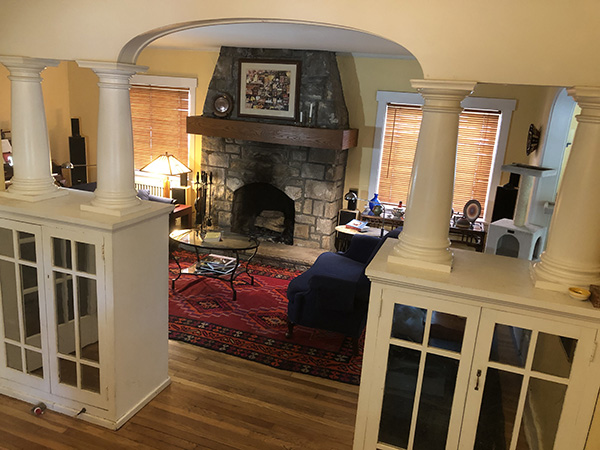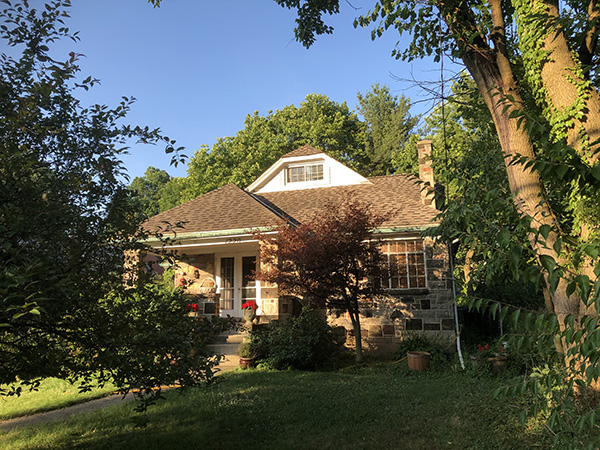
Architecture Feature: The McCann Cottage — Pittsburgh’s Version of a Craftsman’s Bungalow
By Bill Bates, FAIA, NOMA
When I was asked to write about my favorite building in Western Pennsylvania I was torn, given all of the iconic architecture in the region. I finally decided to highlight a building that I know better than any other, having lived in it for 41 years.
It’s a humble 1924 craftsman style bungalow located in the historic district of Mt. Lebanon, Pennsylvania. The McCann Cottage is named after its builder, Clyde McCann, who constructed approximately 48 of these one- and a-half story cottages in the South Hills. Unfortunately, the architect of this modest gem is 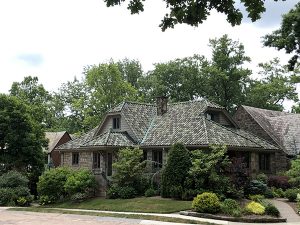 unknown.
unknown.
The moment that I first saw the house I was struck by its solid form, which is reminiscent of H. H. Richardson’s Emmanuel Episcopal Church on Pittsburgh’s North Side. The fenestration’s graceful proportions provide a perfect lightness to the cottage’s otherwise heavy masonry and clay tile cloak. The stone exterior has a rustic elegance that celebrates the deft artistry of its masons, while the interior woodwork and cabinetry express a playful honesty that conveys a sense of restful comfort.
The basic model has two bedrooms on the first floor and two bedrooms on the second floor. Their exterior was typically constructed of local gray sandstone exterior walls with a hipped 10-on-12 pitch, clay tile roof. The builder produced several variations of the plan. There is an extended model that has two extra dormers on the side of the house and a porch that projects beyond the plane of the front facade. The basic model was also replicated in brick using the same footprint as the stone cottage. These houses are typically sited on corner lots allowing easy access to the integral tandem garage which opens on the side of the house.
One might expect the interiors to be dark but the house is very bright and airy thanks to its French casement windows that provide unimpeded views when opened and flood the cozy interior with light and abundant cross ventilation. Exterior views and access are further enhanced by the presence of 15 lite French doors opening onto the porch from the dining room and entry sunroom. Together all of these openings give the house a warm lantern-like street presence at night. The sunroom at the entry is wrapped with windows providing framed views in three directions.
The interior details feature a living room anchored by a large floor to ceiling ashlar cut stone fireplace, which echos the exterio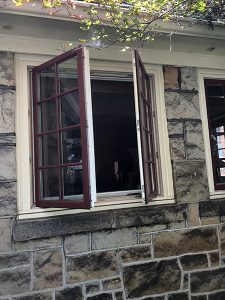 r. The living room is open to the dining room but the two spaces are given definition by the presence of two double-sided low glass-front cabinets that are capped off with truncated Tuscan columns and a sweeping wood archway.
r. The living room is open to the dining room but the two spaces are given definition by the presence of two double-sided low glass-front cabinets that are capped off with truncated Tuscan columns and a sweeping wood archway.
The floor plan of both models of the cottage offers two bedrooms and a bath on the first floor that is ideal for aging in place. The extended model provides a larger kitchen and living room than the basic model but the circulation pattern is similar in both versions. The hipped roof extends over the integral front porch, which is also embraced by the stone facade affording the residents a shady summertime view of the neighborhood.
The half-story low gabled second floor was typically laid out for two bedrooms without a bath. However even the smaller basic model has adequate space to add a full bath. The walls consist of textured plaster that adds to the rustic craftsman charm of the structure.
The McCann Cottage has an unassuming charm that is immediately inviting and continues to reveal a depth of character over time.
Bill Bates, a Pittsburgh architect, has a long history of international development experience in corporate real estate and construction. A longtime member of the Pittsburgh History & Landmarks Foundation, he has served as the president of the American Institute of Architects (AIA) national, AIA Pennsylvania, and AIA Pittsburgh. He has also served as chair of our real estate development board and as chair of the boards of the Community Design Center and the Green Building Alliance.

